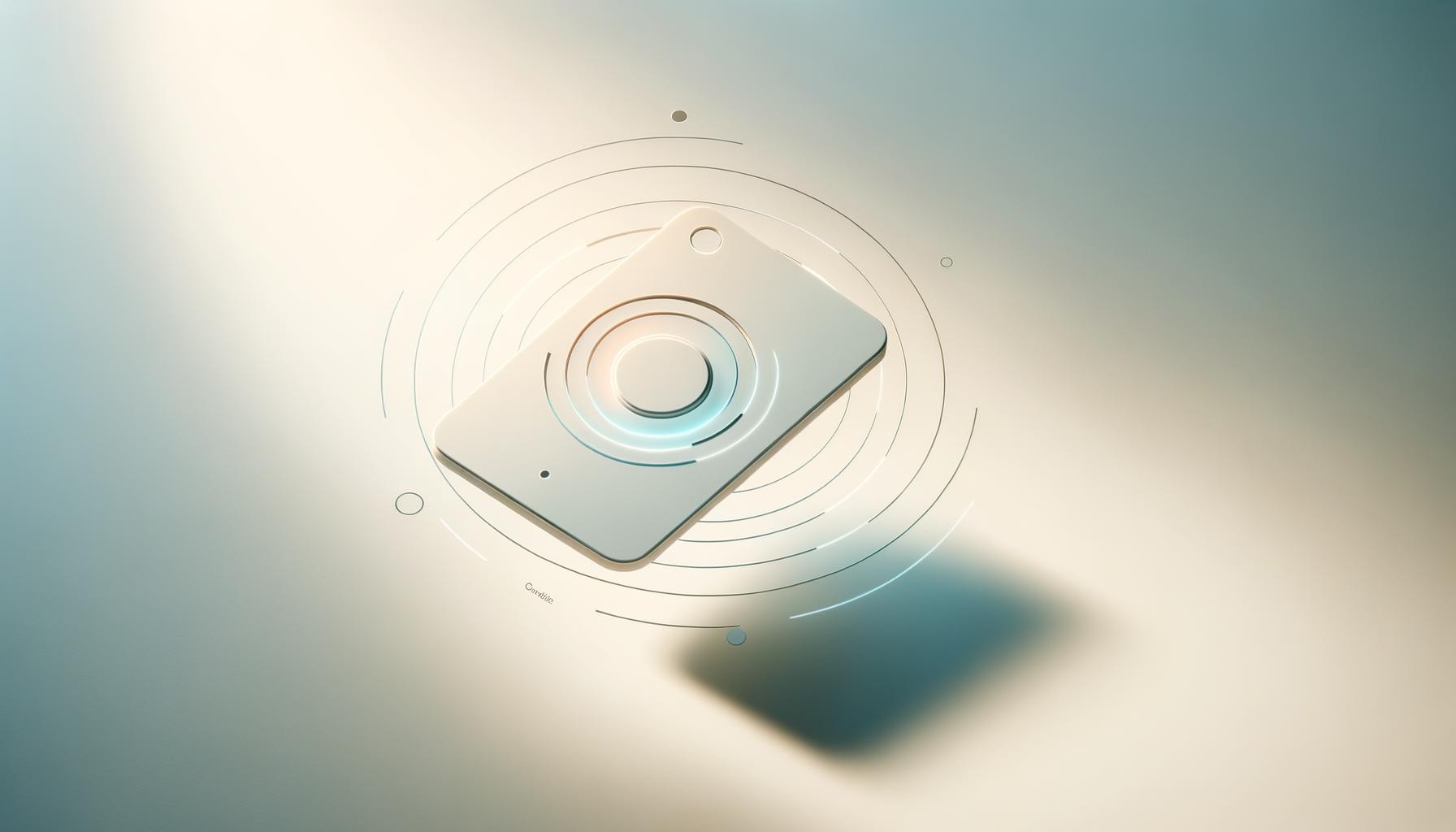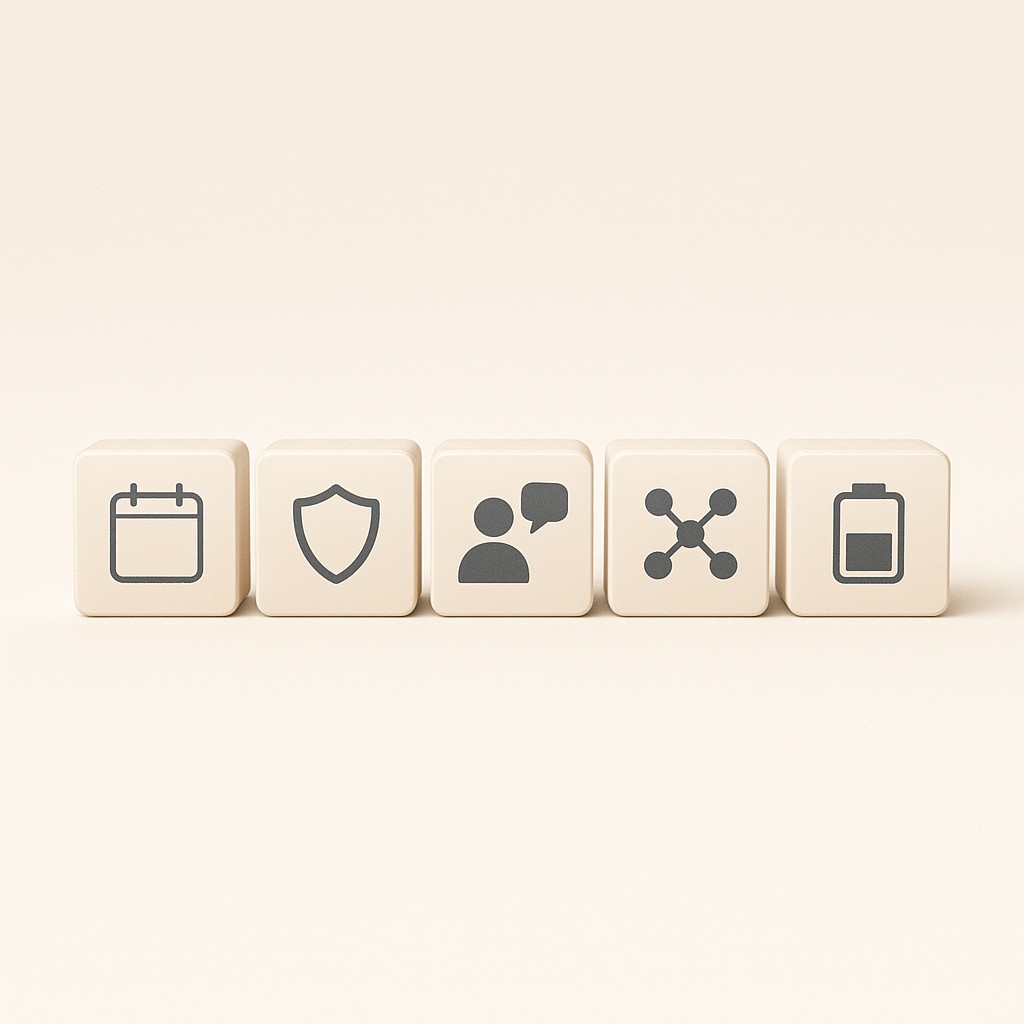Build Consistent Productivity Habits Anywhere
Build Consistent Productivity Habits Anywhere

The Interruption Problem Isn’t Where You Think
“Got a sec?” You’re deep into a tough problem, but a teammate pokes their head in. That one quick ask drags you into a 45-minute detour. Suddenly, the thread you were holding—gone. It happens every week, doesn’t matter where you sit.
It’s easy to blame the office, too loud, too many pop-ins. Or point to home, too quiet, too many distractions. But the actual problem? It’s not about where you work. It’s about how you let your day get carved up.
Swapping a desk for your kitchen table doesn’t change the patterns. The couch whispers, “Just 5 minutes.” Slack buzzes with a “Do you have time?” Your phone’s a siren song right when you’re finally getting momentum. These distractions just swap outfits depending on your zip code.
The key? Intentionally designing to build consistent productivity habits so your focus goes with you wherever you work.
The Patterns That Actually Break Deep Work
When I look at what tanks my productivity, it isn’t location. It’s the constant context switching and blurred boundaries that, over time, chip away at your ability to sustain deep work. The numbers support it: Unproductive meetings eat up 79 hours a year for knowledge workers—and the biggest hits come from chat apps, costing 157 hours in lost focus overall. It isn’t one noisy office or a particularly chatty Slack channel.
And here’s what gets glossed over in all those “remote vs. office” debates: both setups hand you the same distractions, just dressed differently. Sure, remote means no commute. More time and more control right off the bat. But habit-based productivity is what turns that advantage into real gains. Productivity jumps nearly 42% at companies with modern practices and trust, compared to a typical U.S. workplace. The perks feel good, but they only last if you build systems around them.
I know there are real worries swirling behind that webcam—like, will you look unhelpful if you’re not always responding in seconds? Will your manager start to wonder where you are if you go heads-down for an hour? I’ve felt that pressure myself. The thing is, you don’t win by being endlessly available. In reality, clarity beats constant presence hands down. When people know when and how to reach you, they stop guessing and you get to actually work.
Hybrid setups add a curveball—sometimes your week syncs up perfectly, sometimes it’s chaos. I’ve found it’s about aligning with the predictable rhythms you can control, like early mornings before things get noisy or late afternoons when energy dips and meetings cluster. Then you flex—nudge, adapt, reset when you need to.
The takeaway is simple. Your workspace doesn’t make you productive—your habits do. Build productivity systems that stick to protect your focus and set clear boundaries. Everything good follows from that.
The Habit-First Productivity Playbook to Build Consistent Productivity Habits
Here’s what works for me. I call it my Habit-First Productivity Playbook. This isn’t another “hack your workspace” post. It’s a set of repeatable habits you can carry anywhere—home, office, coffee shop—that keeps focus steady and collaboration reliable.

The playbook runs on five practical pillars. You protect your deep work by blocking off time no one else touches. You enforce boundaries so your day has real edges—not blurry lines that stretch into the night. You clarify availability with explicit signals, wiping out the guesswork. You align collaboration windows to fit when you’re actually available—not whenever someone wants. And you orchestrate your schedule around energy, putting deep tasks in your mental peak and meetings in those natural troughs that pop up midday. Spread these out and you get a system that holds up anywhere.
Treat these habits like version control. Small tweaks, quick rollbacks. If something doesn’t work—say, your “no meetings before 11” rule tanks a project—you revise, commit again. No guilt, no sunk cost. Iteration is the point, not the problem.
Let’s talk energy planning for a second since nobody teaches this (and it’s huge). Start work at the same time every day to anchor your body and mind. Use energy-based task planning to stack your deepest work in your cognitive peak—that slot when you hit flow and stubborn bugs finally make sense. Tuck recurring meetings and shallow tasks in those natural attention troughs, typically after lunch or toward day’s end. Anchor routines—like a quick morning check-in or a shutdown ritual—so your momentum doesn’t depend on random energy.
Availability gets sharper—and collaboration gets saner—when you set norms up front. Status updates aren’t just for show. Closing your door or marking a Slack status as “deep work” beats “maybe I’m free?” every time. Block chunks of time and don’t apologize for them. Overcommunicate your progress so people aren’t left wondering if you vanished. When everybody signals clearly, framing cuts down back-and-forth, which means you get hours back and momentum doesn’t stall.
This playbook helps you build consistent productivity habits that travel with you. It doesn’t care where your desk is. It cares what you do, and how reliably you do it. Make the system your own—test, break, tweak, repeat—and you’ll find your productivity finally goes where you do.
Practical Steps for a Habit-First Workday
Starting the day clear and sharp is underrated. I’ve found a predictable activation ritual cues my brain that it’s time to shift gears. For me, it’s the same sequence every morning: drop my phone on the shelf, walk to the kitchen, pour coffee, then return to my desk with purpose. That five-minute loop sounds almost silly, but it marks the line between “home mode” and “focus mode.” If I skip it, the whole day feels foggy. Use a ritual that signals “now is work”—even if all it means is quietly tying your shoes before you sit down.
Protecting deep work takes more than strong intentions. It needs straight-up blocking. I place deep work windows on my calendar, treat them like meetings, and let teammates know that time is no-fly. Interruptions still happen, so I started keeping a physical notepad for jotting down “Can you check this?” requests rather than jumping in right away. When you respond later, you break the habit of context switching. You also train your environment—colleagues, family, even your Slack notifications—to expect that heads-down really means “catch me after.” The first few weeks feel awkward, but patterns stick.
Maybe this is just me, but I sometimes forget I put my headphones on at all and find myself practicing deep work for engineers while talking to the microwave about API endpoints. Last month, I spent almost ten minutes explaining the difference between blocking and non-blocking calls before I realized, mid-monologue, that the only audience was the fridge. I wish I could say this solved the laundry problem—the laundry still stares at me—but the physical signal works. People pause before interrupting, even if the appliances don’t.
Availability should never be a mystery. I do this with physical signals—like noise-canceling headphones, even if not playing anything, or booking a quiet spot in a shared office. Digitally, I’ll set Slack to “deep work” or flip my calendar to “busy.” It’s not about hiding—it’s about making collaboration intentional. When people see these signals, the “got a sec?” pop-ins turn into booked chats or threaded messages, which makes a world of difference for focus.
Collaboration works best when it’s choreographed, not constant. I batch responses into windows—typically two set times (late morning and late afternoon) when I’m fully available for questions, feedback, or meetings. When colleagues know what to expect, “ad-hoc pings” drop dramatically. Be explicit up front. Share your collaboration slots, clarify when you’ll reply, and stick to it.
Leaning into your energy peaks gives you leverage, especially on hybrid schedules. If the office is noisy or meeting-heavy, I squeeze deep work into the early mornings or late afternoons—when distractions are lowest and mental clarity is highest. The rest, like email and meetings, fits into my low-energy troughs. It might sound like over-planning, but you’ll notice those small shifts keep deep work untouched, and meetings sit exactly where they do the least damage.
Closing the day physically is everything. I shut my laptop, step outside (sometimes just to the balcony), or move to a different room. It’s a small act but marks a firm “off” in my mind. Otherwise, it’s way too easy for work to bleed into downtime. With a deliberate end, the boundary between work and life gets restored—every day, not just sometimes.
When Habits Meet Doubt (Time, Helpfulness, and Hybrid Realities)
Let’s tackle the biggest resistance up front. Isn’t all this habit stuff a time sink? I hear that a lot, usually from folks who are already juggling schedules and feeling pressed for every minute. Six months ago I would roll my eyes at the idea of setting a “morning routine”—felt like empty productivity theater. But here’s what actually happens when you stick to predictable deep work blocks and turn down context switching: the time you spend up front to set habits pays massive dividends in focus you actually keep. A stray interruption might only cost a minute, but getting back into the zone steals much longer. Each “one more quick message” stretches a simple task into a dragged-out ordeal—I lost count of how many half-written docs I ended up patching late at night. Invest early, and that compounding effect of routine means you avoid those late scrambles and get clean, repeatable output. Anyone can carve focused time once or twice; systems make it happen every week.
If you’re worried it’s too much hassle, just block off a chunk tomorrow morning and see how much lighter your day feels.
The fear that you’ll seem unhelpful if you’re not instantly available builds fast, especially in hybrid teams. But clarity of availability—when you’re working, when you’re not—beats being everywhere all the time. You’re more valuable when people know what to expect and can rely on your follow-through, not just your reaction speed.
And when it comes to managers (or teammates), alignment isn’t just nice—it’s necessary for hybrid setups to avoid chaos. Six in ten folks with remote-capable jobs want a hybrid arrangement, about a third wish for fully remote, and fewer than one in ten crave on-site only (Gallup). That means most of us are facing shifting needs—and blurred routines—for the foreseeable future. I learned not to stay late just because someone pinged at 4:59. Now, I make my blocked times obvious on the shared calendar, use status updates, and set up a Friday check-in to settle the week’s priorities. It doesn’t fix the unpredictability entirely, but it stops schedule surprises and reassures managers you’re not slipping through the cracks.
This system doesn’t care where you sit—home or office—it runs on habits you can start testing tomorrow. So if you try one thing, let it be a clear “deep work” block in your calendar. See how it changes your pace.
Need clear updates, docs, or posts without losing focus? Use our AI to generate content fast, so you can protect deep work and keep collaboration sharp while spending less time writing.
If you find the laundry still staring back (I haven’t figured that part out), at least the habits keep your attention pointed where it matters most.
Enjoyed this post? For more insights on engineering leadership, mindful productivity, and navigating the modern workday, follow me on LinkedIn to stay inspired and join the conversation.
You can also view and comment on the original post here .
